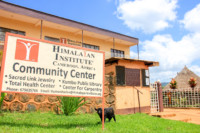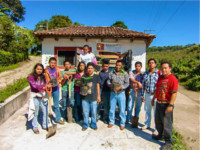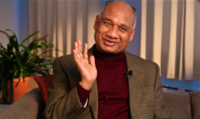An opportunity for a party
Himalayan Institute Mexico General Manager Geovanni is planning to host a Día de los Muertos party to raise funds in support of the Vida Project. This is sure to be a fantastic way to support our Vida families, and also to participate in one of their celebrations. Why not join the fun?
Some background notes
More than 500 years ago, when the Spanish conquistadors landed in what is now Mexico, they encountered natives practicing a ritual that seemed to mock death. It was a ritual the indigenous people had been practicing at least 3,000 years, a joyous occasion remembering ancestors and celebrating the continuity of life. It is believed that at this time the souls of the departed return to visit the living.
Unlike the Spaniards, who viewed death as the end of life, the natives viewed it as the continuation of life. Instead of fearing death, they embraced it. To them, life was a dream and only in death did they become truly awake.
Although the ritual has since been merged with Catholic theology and moved so it coincides with All Saints’ Day and All Souls’ Day (November 1 and 2), it still maintains the basic principles of the Aztec ritual. For instance, the skeleton is a strong symbol for both Halloween and Día de los Muertos, yet the meaning is very different. For Día de los Muertos, the skeleton represents the dead playfully mimicking the living. Skulls, kept as trophies by Aztecs and other Mesoamerican civilizations, were used to symbolize death and rebirth and to honor the dead, believed to come back to visit during Dia de los Muertos. Today, people don wooden skull masks called calacas and dance in honor of their deceased relatives. The wooden skulls are also placed on altars that are dedicated to the dead. Sugar skulls, made with the names of the dead person on the forehead, are eaten by a relative or friend. It is a happy occasion for remembering pleasant times with departed family members.
In rural Mexico, people visit the cemetery where their loved ones are buried. They decorate gravesites with marigold flowers and candles. They bring toys for dead children and bottles of tequila to adults. They sit on picnic blankets next to grave sites and eat the favorite food of their loved ones.
Families also build altars in their homes, dedicating them to the dead. They surround these altars with flowers, food, and pictures of the deceased. They light candles and place them next to the altar.



